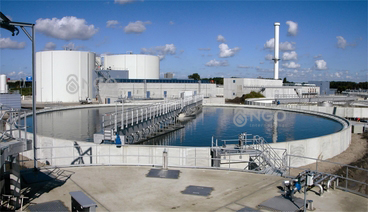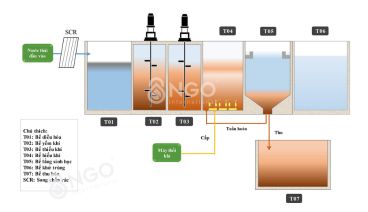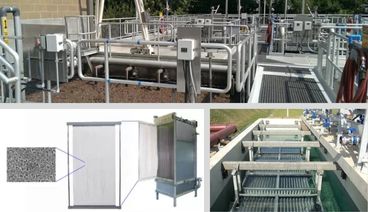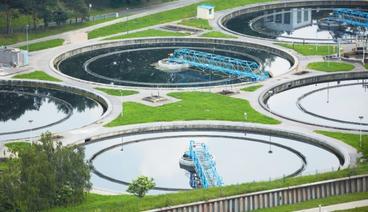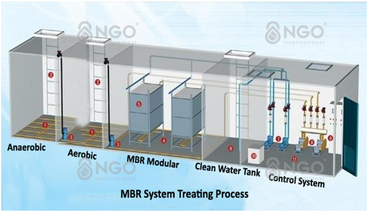MBBR (Moving Bed Biofilm Reactor) is a type of media used in wastewater treatment systems, combining traditional anaerobic or aerobic biological treatment processes and adhesive mobile substrates to optimize the treatment performance of contaminated components.
1. Operating principle
The nature of MBBR is CAS/AAO/ AO process, with additional moving beds. Moving beds help to increase the surface area for biomass to tack on, hence concentration of MLSS can increase significantly. The more concentration of MLSS, the less footprint require for effluent treatment system.

2. Advantages
- Reduce footprint compared to CAS, AAO
- Moving beds can move in the movement of waste water, help better mixing, increase contact time between microorganisms and waste water, increase the efficiency of treatment
- Produce less surplus sludge compared to CAS because anaerobic and anoxic microorganisms help to treat BOD more comprehensively
- Outlet water quality can meet B or A standard, depend on design
3. Disadvantages
- Outlet water quality depends on sedimentation ability of activated sludge and size of tanks. To maintain good outlet water quality and reduce fluctuation of quality, the system require huge land/ space to build up system
- Outlet water quality maybe not stable, because sedimentation of sludge depends on many factors such as temperature, MLSS concentration, organic load and hydraulic load of inlet waste water, etc
- Footprint required is still large
- Require disinfection chemicals
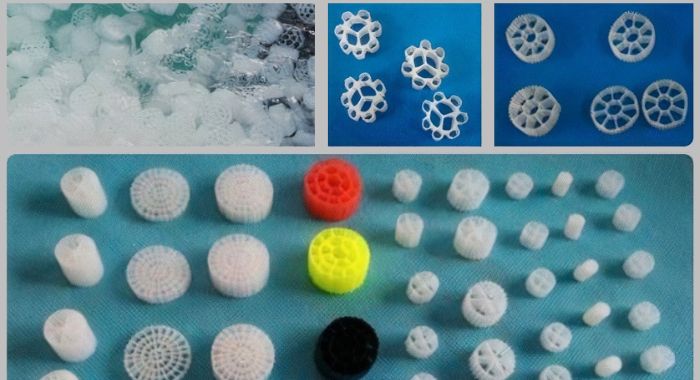

***Vui lòng đọc kỹ yêu cầu về Điều khoản sử dụng – Bản quyền trước khi sao chép hoặc trích dẫn nội dung và hình ảnh của website.
Trang web này thuộc bản quyền của Công ty TNHH Quốc tế NGO (NGO International). Bất kỳ hình thức sử dụng hoặc sao chép một phần hoặc toàn bộ nội dung dưới mọi hình thức đều bị nghiêm cấm, trừ trường hợp được sự cho phép rõ ràng bằng văn bản từ Chúng tôi.

 Tiếng Việt
Tiếng Việt

